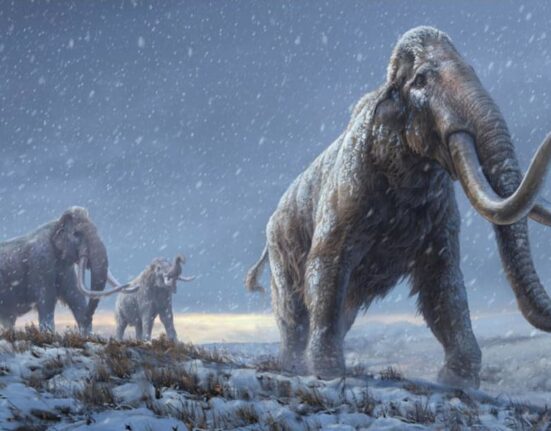The Arctic holds many mysteries, and one intriguing tale involves the Greenland sled dogs, known as Qimmit. These hardy animals have been companions to humans for centuries, traversing the icy terrain of Greenland with skill and loyalty. But what do these dogs’ genes reveal about the history of the Arctic and its inhabitants?
In a recent study published in Science, researchers uncovered fascinating insights into the genetic origins of Greenland’s sled dogs. Contrary to previous beliefs, it appears that both humans and their canine partners arrived in Greenland much earlier than initially thought — around 1,000 years ago. This discovery sheds new light on humanity’s enduring relationship with dogs throughout history.
Audrey Lin, an evolutionary biologist at the American Museum of Natural History, emphasizes the significance of understanding this bond between humans and dogs. She notes that by studying dogs, we gain valuable insights into our own evolution and societal development. Dogs have not only been faithful companions but also reflections of human values through domestication.
Tatiana Feuerborn, a paleogeneticist at the National Human Genome Research Institute, highlights the unique role of Greenland sled dogs compared to other breeds. While many working dogs have transitioned into being primarily companion animals, the Qimmit remain dedicated sled dogs within Inuit culture. Bred for resilience in harsh Arctic conditions, these dogs are considered essential
“high tech technology”
by their human companions.
Anders Johannes Hansen from the University of Copenhagen underscores the meticulous selection process undertaken by Greenlandic Inuit people when breeding sled dogs. Their deep knowledge and experience allow them to identify traits that make a superior sled dog suited for survival in challenging environments.
To unravel the ancient lineage of Qimmit sled dogs, researchers collected DNA samples from 92 individuals across Greenland. By analyzing each dog’s genome extracted from various sources such as saliva swabs and archaeological remains dating back hundreds of years, scientists traced their genetic heritage.
The genomic analysis revealed limited interbreeding with European dog breeds among Qimmit populations—a testament to their prolonged isolation within Greenland. Moreover, distinct genetic groups observed in these sled dogs corresponded closely with different human cultural groups on the island.
One striking finding was that all existing Qimmit groups shared a common ancestor approximately 1,000 years ago with an extinct population from northeast Greenland. This evidence suggests an earlier presence of humans in Greenland than previously recorded and supports theories placing Inuit settlements ahead of Norse arrivals.
The connection between modern-day Qimmit and a 3,700-year-old Alaskan dog hints at rapid migration patterns among Inuit populations across vast Arctic regions—underscoring intertwined histories shaped by environmental challenges like climate change.
Despite facing threats such as diminishing sea ice due to climate change and competition from modern transportation methods like snowmobiles leading to declining numbers over recent years—the genetic data obtained can guide conservation efforts aimed at preserving this unique breed vital to Arctic cultures.
Contrary to concerns about genetic diversity often associated with inbred populations leading to health issues in some dog breeds—Qimmit exhibit low levels of inbreeding alongside robust health traits crucial for their survival as efficient working sled dogs capable of thriving under extreme conditions without significant health complications.
The story embedded within Greenland’s sled dog DNA unveils a profound narrative reflecting centuries-old partnerships between humans and animals adapting together against formidable odds—an enduring bond etched deeply into both cultural traditions and biological legacies alike.









Leave feedback about this